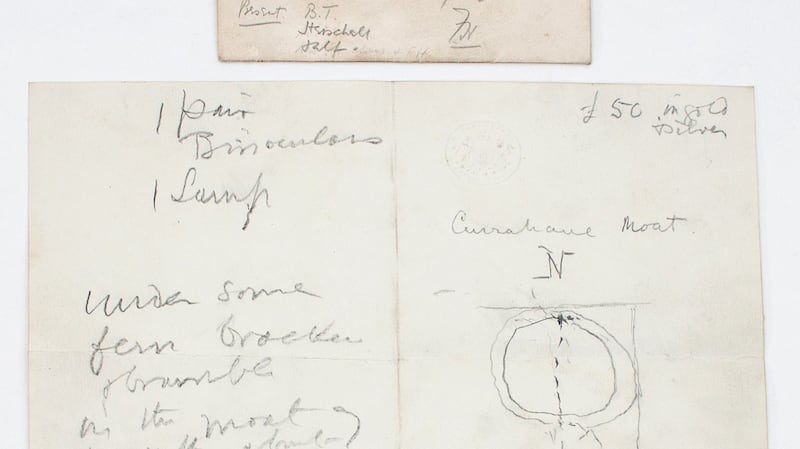A Treasure Island-style map drawn by Sir Roger Casement to show where he had buried gold and other valuables after landing at Banna Strand in Co Kerry on Good Friday 1916 has come to light in England.
Accompanying notes kept by an agent in Britain’s MI5 also reveal what happened to the items Casement buried down a rabbit-hole in a fairy fort shortly before he was arrested on April 21st, 1916.
Casement's plot to import guns from Germany for the Easter Rising had been intercepted by British intelligence services. The ship carrying the guns, The Aud, was scuttled and Casement had disembarked from a German U-Boat submarine at Banna Strand. He was arrested by the Royal Irish Constabulary hours later and taken to Dublin and later London.

While the Rising began in Dublin on Easter Monday, Casement was being interrogated at Scotland Yard by, among others, Maj Frank Hall, from Warrenpoint, Co Down, a gun-running founder of the Ulster Volunteers who had been recruited into MI5, the British security service.
One of Hall's descendants has consigned items of "memorabilia surrounding the 1916 Easter Rising" relating to both Hall and Casement to Chorley's auctioneers in Cheltenham where they will be auctioned tomorrow.
Casement’s largesse
Among them is an envelope containing a "Plan of Rath drawn by Roger Casement at Scotland Yard" indicating that the items had been buried "under some fern bracken & bramble" in a fairy fort close to Currahane Moat near Ardfert. Casement listed "GBP 50 in gold and silver; 1 pair binoculars; and 1 lamp".
The British authorities recovered the items but it turned out Casement had hidden more than he told the interrogators.
Auctioneer Simon Chorley, who travelled to Ireland to research the map's history, said Hall's account of the distribution of Casement's largesse, written on the back of the map, provided a definitive account of a matter long subject to rumour and speculation.
Hall's document reveals that Casement's "treasure" also included pistols, gold cuff links and a "flag of the Irish Republic", which were divided up among his captors. Among those to benefit were a Det Insp Cheesman who was given the "gold sleeve links". Hall himself kept "3 mauser pistols". He claimed he gave one of them to [Major Ivor] "Price who used it at Connie Marciewitz [sic] at the Castle & missed her".
Casement's flag of the Irish Republic was given to the RIC Mess at the Phoenix Park and the "cash" [in gold and silver coins] was given to the two RIC officers who arrested Casement in Kerry. The auctioneers said the map would be auctioned an estimate of £1,500-£2,000 (€1,926-€2,568). Other items from Hall's collection will be sold separately.
Casement was tried for treason and sentenced to death by hanging, aged 51, at London’s Pentonville Prison in August 1916.
Hall's MI5 code name was Q and was reputedly the inspiration for the character of that name in Ian Fleming's James Bond novels.











